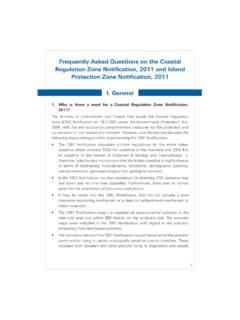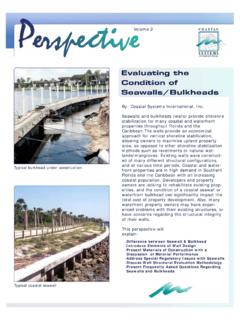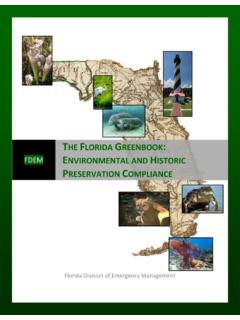Transcription of 2 from Kīlauea Volcano - ivhhn.org
1 12. More Information Vog dashboard (comprehensive information including frequently asked frequently AskedQuestions on Vog links below): UH M noa VMAP Vog Forecast Model (SO and sulfate 2. from K lauea Volcano Questions on Vog particle forecasts based on wind model): HDOH Hawai i short-term SO2 monitoring and advisory from K lauea Volcano (SO2 gas data from island-wide monitoring stations): EPA AirNow current conditions: (select Hawaii State at top of page). NPS HVNP air quality monitoring and advisory (SO2 and data from within the National Park): Acknowledgements This fact sheet was updated in August 2016 following the findings Graphic Design by Klineworks from surveys conducted by Dr.
2 Claire Horwell, Durham University, UK, on community protection from vog, and two interagency workshops supported by UH Hilo Center for the Study of Active Volcanoes, Hawai i County Civil Defense Agency, and the National Park Service. The fact sheet updates were prepared by Hawaii Department of Health (John Peard); USGS Hawaiian Volcano Observatory (Tamar Elias); and International Volcanic Health Hazard Network (Claire Horwell). USGSUSGS. UPDATED 08 2016. 2 SO2 is a colorless, irritating gas that has an acrid odor like 3. BARON fireworks or a struck match. It is also emitted from other sources, such as fossil fuel power plants and motor vehicles.
3 Fine particles consist of particulate matter less than micrometers in diameter and are referred to as '. These particles are smaller than the width of a human hair. in vog is mainly composed of acid and neutral sulfate particles. Other sources of include vehicle exhaust and smoke from fires. Vog shrouds Hilo Bay, 1/17/2010. Vog contains mostly SO2 and acid particles, in contrast to Introduction urban, industrial, and other pollution sources, which also contain additional toxic contaminants, such as ozone and Ongoing volcanic activity at the summit and East Rift Zone of hydrocarbons.
4 K lauea Volcano , on the Island of Hawai i, creates the potential for airborne health hazards to residents and visitors. At the levels of volcanic emissions occurring over recent years, What is laze? individuals with pre-existing respiratory conditions are the When molten lava primary group at risk of experiencing health effects from vog flows into the ocean, exposures, but healthy people may also experience symptoms. it reacts vigorously General information, advice, and data resources are provided with sea water to in this fact sheet; however, it is very important to listen to your create large steam own body and take measures to protect yourself if you feel plumes laden with your health is being affected by vog.
5 Hydrochloric acid. These acidic laze'. USGS. plumes mainly create a local hazard for What is vog? people visiting the coastal entry. Inhaling or contacting acid The term vog' refers to the hazy air pollution caused by the gases and liquids can irritate the skin, eyes and respiratory volcanic emissions from K lauea Volcano , which are primarily tract, and may cause breathing difficulties, particularly for water vapor (H2O), carbon dioxide (CO2), and sulfur dioxide people with pre-existing respiratory diseases. (SO2) gas. As SO2 is released from the summit and east rift What is volcanic ash?
6 Eruptive vents, it reacts in the atmosphere with oxygen, sunlight, moisture, and other gases and particles and, within hours to days, converts to fine particles, which scatter sunlight, Volcanic ash is made of tiny rock and glass particles (less than causing the visible haze that is observed downwind of K lauea. 2 mm wide), which can be inhaled by people in downwind Areas far downwind ( , the west side of Hawai i Island and communities. Substantial volcanic ash emissions from K lauea other islands in the state) are mostly affected by the fine have been rare in recent years.
7 Rockfalls from the vent walls of particles; however, areas closer to the eruptive vents, including Halema uma u Crater and spattering of the lava lake continue to the communities ranging from Ocean View to Hilo, can be produce minor, local ash emissions that do not generally pose a exposed to both SO2 gas and fine particles during periods of vog. health hazard, so are not discussed further here. 4 5. How much vog is there and where does it go? Downwind areas relatively near K lauea (approximately ranging from Ocean View to Hilo): under certain wind In any location, vog conditions, SO2 can reach levels considered unhealthy for concentrations are sensitive groups'.
8 Primarily dependent on the amount of volcanic In most areas: concentrations only occasionally reach levels considered unhealthy for sensitive groups'. emissions, the distance from the source vents, The County of Hawai i, HDOH, USGS Hawaiian ADVISORY LEVELS. UH MANOA VMAP VOG MODEL. and the wind direction Volcano Observatory, and several other federal and speed on a given day. agencies worked together to form a short-term In the Hawaiian Islands, SO2 color code advisory system, designed the predominant wind to alert people to volcanic SO2 pollution on direction is from the Hawai i Island.
9 The same color code system is northeast (trade winds). used by EPA for 24-hour advisories. The Consequently, the areas advisory websites are listed on the back cover southwest of K lauea are Forecast of vog plume location of this document. Advisory levels color key most frequently affected on the Island of Hawai i during by vog on Hawai i Island. trade winds. Colors indicate health When trade winds are advisory levels. absent, which occurs most often during winter months, East Hawai i, the entire island, or the entire state can be impacted by vog. Sulfur dioxide emissions from K lauea Volcano have decreased substantially since the beginning of the 2008 Halema uma u eruption, resulting in less vog for the island and state.
10 In general, SO2 and are below levels considered to cause serious health effects for the general population. However, some individuals may experience symptoms from both and SO2 exposures, depending on location. Levels of health concern for SO2 and concentrations over the last several years, as defined by the Environmental Protection Agency (EPA) and/or Hawaii EPA. Department of Health (HDOH): In areas close to the eruptive vents ( , Hawai i Volcanoes National Park (HVNP) and surrounds): under certain wind conditions, SO2 can reach levels considered unhealthy' for the general population.










